-
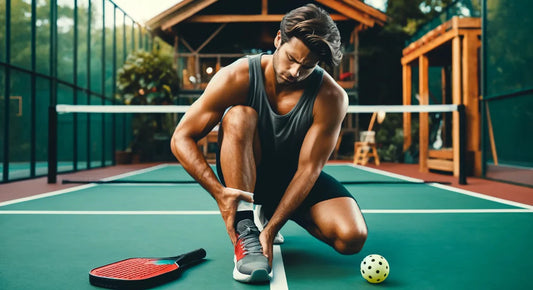
Pickleball Injuries are Worse Than We Care to Admit
How many headlines have you read this year about how "pickleball is a health risk" and "pickleball injuries are on the rise?" To us, it...
Pickleball Injuries are Worse Than We Care to Admit
How many headlines have you read this year about how "pickleball is a health risk" and "pickleball injuries are on the rise?"
To us, it feels like we've seen more of those than bad thirds at rec night. But a new study has us wondering if they have a point.
Public health researchers at University of Arkansas sought to identify the most prominent risks for pickleball injury.
The study examined 17,416 emergency room visits related to pickleball activity, paying close attention to how injuries occurred and effective countermeasures.
The most common injury diagnosis was fractures at 30%, followed by sprains at 17% and internal organ injury at 7.2%...Most of the hospital admissions were for cardiac arrest, with the other 25% admitted for fractures. - University of Arkansas News
Different Injuries for Different Age Groups
Importantly, the study found that different age groups see different types of injuries (and for different reasons).
Those under 26 years of age were more likely to experience injuries as a result of the misuse of equipment, where those from 26 to 50 typically just played too much and sustained overuse-related injuries.
The majority of injuries observed in the research happened to players over 50, who exhibited a greater chance of cardiac arrest or other cardiovascular concerns.
For our story on paddles and their relationship to player safety, click here.
How many headlines have you read this year about how "pickleball is a health risk" and "pickleball injuries are on the rise?" To us, it...
-
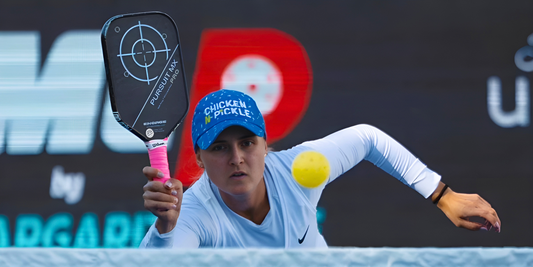
Pickleball ‘Bangers’ are (Mostly) Good for the Sport
“Bangers” in pickleball are the bane of many mid-level players’ existence. But their value to those seeking to improve cannot be overstated.
Pickleball ‘Bangers’ are (Mostly) Good for the Sport
When a post in our Facebook group receives nearly 800 comments, we’re inclined to think it’s because it struck a chord with pickleball players.
In this case, it’s clear that poster David Nguyen struck a chord with some players…and upset others:
He simply asked, in essence: what’s so bad about bangers?
They’re the subject of countless videos with titles that begin with, “how to defeat a…”.But should they really be demonized, as David’s observation seems to suggest they are?
The two main sides commenters took can be summarized by these two contributions:
The purpose of the game is to win. The how is your problem! – David Rios
Vs.
Hitting it hard and driving the ball is definitely part of the game, but people do it way too much and when it's not opportunistic. There is a time and place for it. People tend to just do it all the time without any real purpose other than "sMasH IT haRd!!" – Patrick ReynoldsBasically, some seemed to believe that anything is fair game, while others are less enthusiastic about the pervasiveness of bangers in the recreational pickleball scene.
When Bangers are an Asset to the Game
I’m not going to deny that when I was between ratings 2.5-3.5, “bangers” were the bane of my existence.
But they were annoying for different reasons at different levels of play.
→ Maybe it’s because I had no organized sports experience prior to pickleball, but facing off against bangers at my lowest rating felt intimidating; I erroneously believed they must be much higher in level than me and I shied away from doing what I should have on the court
→ At the 3.0 level, they annoyed me for the same reasons they annoy most casual players: they just wouldn’t let up, and points ended before they even began (what I didn’t pay attention to, however, was how often the points ended because they charged balls straight into the net).
→ As a 3.5, I finally started to feel frustration with bangers for what I consider to be the “right” reasons. Now, I was annoyed that I wasn’t playing a more diverse game of skill and strategy. The thing about bangers is that they’re clueless when it comes to resets, and once I got to a more sophisticated level of play, all I wanted to do was practice my cross-court dinks and – gasp – maybe even practice an erne or ATP, something the soft game sets up.
But now that I’m consistently hovering around a 4.0 rating, I’ve enough hindsight to realize that playing against those bangers eventually taught me a thing or two. And I have a feeling that many players experience something similar.
Like it or not, bangers teach us valuable lessons in the importance of touch and the ability to reset a ball – critical elements of pickleball, played at any level.
If you’re a lower-level player, at some point you’re going to Google, “how to defeat a banger,” only to realize you’ve been:
- flicking your wrist while dinking
- holding your paddle vertically instead of horizontally while trying to slow the ball down
- swinging at instead of punching those volleys in front of you at the kitchen line
Bangers teach us how to step back as soon as the ball is popped up and how to place our paddles down at the ready.
They teach us to react calmly in stressful situations, a critical skill for players of any game, physical or mental.
…And, yes, they probably teach us that we are far more capable of inventing innovative sequences of cursing and damning than we previously thought. Whether or not we actually let those words escape our lips is a lesson for another day.The Caveat
Every hot take should have its limits defined, and in this case, my limit is this: if you’re rampantly bodybagging or not taking care to bodybag in the safest way possible, you shouldn’t be playing, period.
There’s no reason to hit someone in the face on purpose, no matter how much clout, personal pride, or even money is on the line.
An occasional, strategic chicken wing or leg shot is totally fine – part of the game, even – anything more aggressive has no place in this or any sport.
But a well-placed shot with pace? That’s just a good shot. Too bad most of the bangers we hear about aren’t always executing good shots, just fast ones.
“Bangers” in pickleball are the bane of many mid-level players’ existence. But their value to those seeking to improve cannot be overstated.
-

Pickleball Injuries are Worse Than We Care to Admit
How many headlines have you read this year about how "pickleball is a health risk" and "pickleball injuries are on the rise?" To us, it...
Pickleball Injuries are Worse Than We Care to Admit
How many headlines have you read this year about how "pickleball is a health risk" and "pickleball injuries are on the rise?"
To us, it feels like we've seen more of those than bad thirds at rec night. But a new study has us wondering if they have a point.
Public health researchers at University of Arkansas sought to identify the most prominent risks for pickleball injury.
The study examined 17,416 emergency room visits related to pickleball activity, paying close attention to how injuries occurred and effective countermeasures.
The most common injury diagnosis was fractures at 30%, followed by sprains at 17% and internal organ injury at 7.2%...Most of the hospital admissions were for cardiac arrest, with the other 25% admitted for fractures. - University of Arkansas News
Different Injuries for Different Age Groups
Importantly, the study found that different age groups see different types of injuries (and for different reasons).
Those under 26 years of age were more likely to experience injuries as a result of the misuse of equipment, where those from 26 to 50 typically just played too much and sustained overuse-related injuries.
The majority of injuries observed in the research happened to players over 50, who exhibited a greater chance of cardiac arrest or other cardiovascular concerns.
For our story on paddles and their relationship to player safety, click here.
How many headlines have you read this year about how "pickleball is a health risk" and "pickleball injuries are on the rise?" To us, it...
-

Pickleball ‘Bangers’ are (Mostly) Good for the Sport
“Bangers” in pickleball are the bane of many mid-level players’ existence. But their value to those seeking to improve cannot be overstated.
Pickleball ‘Bangers’ are (Mostly) Good for the Sport
When a post in our Facebook group receives nearly 800 comments, we’re inclined to think it’s because it struck a chord with pickleball players.
In this case, it’s clear that poster David Nguyen struck a chord with some players…and upset others:
He simply asked, in essence: what’s so bad about bangers?
They’re the subject of countless videos with titles that begin with, “how to defeat a…”.But should they really be demonized, as David’s observation seems to suggest they are?
The two main sides commenters took can be summarized by these two contributions:
The purpose of the game is to win. The how is your problem! – David Rios
Vs.
Hitting it hard and driving the ball is definitely part of the game, but people do it way too much and when it's not opportunistic. There is a time and place for it. People tend to just do it all the time without any real purpose other than "sMasH IT haRd!!" – Patrick ReynoldsBasically, some seemed to believe that anything is fair game, while others are less enthusiastic about the pervasiveness of bangers in the recreational pickleball scene.
When Bangers are an Asset to the Game
I’m not going to deny that when I was between ratings 2.5-3.5, “bangers” were the bane of my existence.
But they were annoying for different reasons at different levels of play.
→ Maybe it’s because I had no organized sports experience prior to pickleball, but facing off against bangers at my lowest rating felt intimidating; I erroneously believed they must be much higher in level than me and I shied away from doing what I should have on the court
→ At the 3.0 level, they annoyed me for the same reasons they annoy most casual players: they just wouldn’t let up, and points ended before they even began (what I didn’t pay attention to, however, was how often the points ended because they charged balls straight into the net).
→ As a 3.5, I finally started to feel frustration with bangers for what I consider to be the “right” reasons. Now, I was annoyed that I wasn’t playing a more diverse game of skill and strategy. The thing about bangers is that they’re clueless when it comes to resets, and once I got to a more sophisticated level of play, all I wanted to do was practice my cross-court dinks and – gasp – maybe even practice an erne or ATP, something the soft game sets up.
But now that I’m consistently hovering around a 4.0 rating, I’ve enough hindsight to realize that playing against those bangers eventually taught me a thing or two. And I have a feeling that many players experience something similar.
Like it or not, bangers teach us valuable lessons in the importance of touch and the ability to reset a ball – critical elements of pickleball, played at any level.
If you’re a lower-level player, at some point you’re going to Google, “how to defeat a banger,” only to realize you’ve been:
- flicking your wrist while dinking
- holding your paddle vertically instead of horizontally while trying to slow the ball down
- swinging at instead of punching those volleys in front of you at the kitchen line
Bangers teach us how to step back as soon as the ball is popped up and how to place our paddles down at the ready.
They teach us to react calmly in stressful situations, a critical skill for players of any game, physical or mental.
…And, yes, they probably teach us that we are far more capable of inventing innovative sequences of cursing and damning than we previously thought. Whether or not we actually let those words escape our lips is a lesson for another day.The Caveat
Every hot take should have its limits defined, and in this case, my limit is this: if you’re rampantly bodybagging or not taking care to bodybag in the safest way possible, you shouldn’t be playing, period.
There’s no reason to hit someone in the face on purpose, no matter how much clout, personal pride, or even money is on the line.
An occasional, strategic chicken wing or leg shot is totally fine – part of the game, even – anything more aggressive has no place in this or any sport.
But a well-placed shot with pace? That’s just a good shot. Too bad most of the bangers we hear about aren’t always executing good shots, just fast ones.
“Bangers” in pickleball are the bane of many mid-level players’ existence. But their value to those seeking to improve cannot be overstated.
COMMUNITY
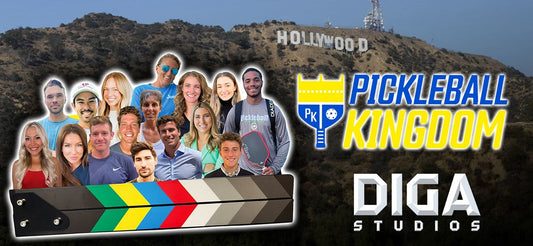
Filming Wraps on Pickleball Competition Show
Shooting wraps on reality TV show, Pickleball Paddle Battle, which is currently exploring options for distribution.
Filming Wraps on Pickleball Competition Show
The pickleball reality show from the Pickleball Kingdom Club, titled Pickleball Paddle Battle, has wrapped filming and will be produced by DIGA Studios.
Hosted by Clayton Echard, pickleball fan and star of Season 26 of The Bachelor, the competition show pits 16 contestants against each other over a 7-day competition that will ultimately crown two winners - one male, one female.
Winners will receive a one-year Pickleball Kingdom sponsorship contract which covers up to 20 U.S. events entries plus travel, lodging & per diem cash.
"We will award two pro contracts based on play and we will grant two Pickleball Kingdom franchises based on the audience's vote," says creator of the show and Pickleball Kingdom CEO, Ace Rodrigues.
"So, it's a type of dual competition show that's never been done before."
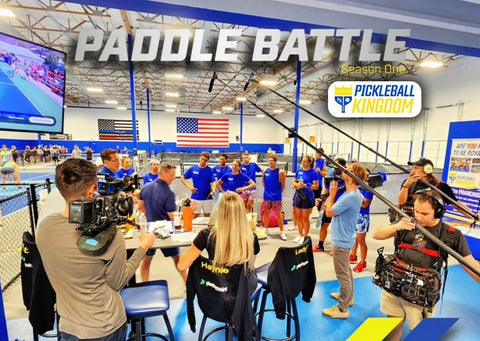
What Pro Pickleball Couldn't Do?
While we love watching pro pickleball events, one thing the community has rightly pointed out about them is that the overall level of production quality is inconsistent.
At a time when we really need to see high level pickleball succeed and grow in viewership, having a show like this with professional-grade production, audio and video quality, and commentary should help make competitive pickleball more accessible.
DIGA Studios will produce and spearhead the distribution of Pickleball Paddle Battle, leveraging its network and industry expertise to place it on a major network or digital platform, according to a press release.
Related: Pickleball ‘Bangers’ are (Mostly) Good for the Sport
The studio is known for producing Teen Wolf, Hot Ones: The Game Show and the upcoming Eminem documentary STANS.
Pickleball Paddle Battle promises to captivate viewers with its fast-paced gameplay, captivating personalities, and compelling storytelling.
You can see a preview of the show and learn more about the cast here.
DIGA Studios is taking meetings regarding distribution.
Shooting wraps on reality TV show, Pickleball Paddle Battle, which is currently exploring options for distribution.
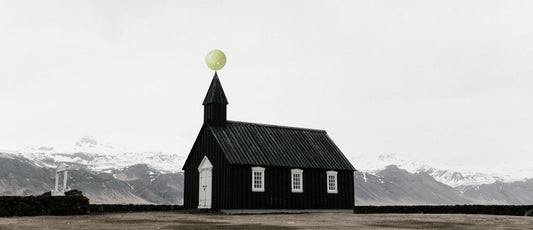
'Lobs for the Lord:' Pickleball Gaining Ground in Faith Communities
Church communities find pickleball to be an excellent community-building device.
'Lobs for the Lord:' Pickleball Gaining Ground in Faith Communities
Pickleball, with its inherently social and inclusive culture, is noted for its community-building capabilities...and churches across the country have picked up pickle for those qualities.
In a time when church attendance is at its lowest point since 1940, parishes, mosques, and synagogues are likely desperate for ideas to keep the population engaged in faith.
The First Baptist Dallas church knows how to tap pickleball's potential. They use their facility's gym to run seasonal tournaments.
They even have a "sports and recreation minister" named Brent McFadden, who tells Southern Baptist Texan that he laughed when pickleball was first suggested as a community engagement tool.
Their first event saw tape on the gym floor and an "alright" turnout. But after the pandemic hit, a familiar demand started to crop up among his parishioners.
Also Read: What Pickleball Looked Like in the 1970s
“My brother-in-law got into it with the referees and statisticians playing pickleball every day during that isolation. He told me that the sport was taking off.”
A total of 36 teams signed up for last winter's league. McFadden expects more will join this year.
The Spiritual Connection
By 2022, the church knew it had to install permanent lines. But the connection to spirituality and faith had to come into play in some way.
McFadden provides video devotionals with scripture and applications for league teams to watch each week.
“I don’t want to provide a way for people just to connect physically, but also to connect with Jesus spiritually,” he told Southern Baptist Texan. “Players sign up in teams of two and the church helps prospective players find partners if needed."
The Coggin Baptist group uses pickleball's accessibly - and outdoor-oriented background - to encourage spiritual discussion.
Member Jina Joss uses pickleball to invite women to a home Bible study on prayer, posting the details on the Brownwood Pickleball Club’s Facebook page. About 15 women signed up for the six-week study, and whoever feels like it after each session hangs around to play on nearby private courts.
“Pickleball lends itself to conversation,” she tells Southern Baptist Texan. “It’s all about fellowship. Why not include Bible study in that?"
Church communities find pickleball to be an excellent community-building device.

Florida's The Villages is Making a Case for 'Pickleball Capital'
Between The Villages' existing 250+ pickleball courts and its incoming mega facility, the region is quickly gaining ground as a mecca for pickleball in the...
Florida's The Villages is Making a Case for 'Pickleball Capital'
Central Florida's The Villages has quite the pickleball pedigree. The area received its first pickleball court at La Hacienda Recreation in 1990 and has since constructed over 250 courts.
This fall, that number will increase significantly.
The Pickleball Club has broken ground on a site at NE 62nd Terrace for its Village Park Center club location, and the space is practically guaranteed to be impressive:
- The new center sits on a 4.7-acre parcel of land
- The 40,000-square-foot club will be climate-controlled (a must in Florida)
- Inside, 16 total pickleball courts and a 3,667-square-foot Players’ Lounge will provide plenty of space for clubgoers
- There will also be a Pro Shop and Pickle’s Café available for guests' enjoyment
The Pickleball Club says this new location is set to open in autumn 2024.
Entire regions (we're looking at you, New England) would consider themselves lucky to have one facility like this.
Read Next: Pickleball in Africa Just Reached a Major Milestone
But the combination of top-tier individual facilities with ample recreational courts gives The Villages some serious geographical credit in the pickleball world.
Between The Villages' existing 250+ pickleball courts and its incoming mega facility, the region is quickly gaining ground as a mecca for pickleball in the...
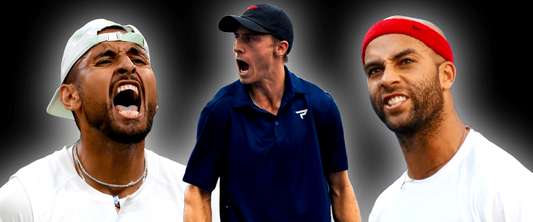
Pickleball Pro Roasted by Tennis Greats for Athleticism Tweet
Some of the most recognizable names in tennis came after recent posts from pickleball pros Christian Alshon & Anna Leigh Waters.
Pickleball Pro Roasted by Tennis Greats for Athleticism Tweet
How many skirmishes will there be in the tennis vs. pickleball war? I thought we reached a ceasefire.
Some recent social media posts from top pickle pros might have reignited something.
Christian Alshon recently tweeted about how pickleball made him a “better athlete than tennis ever did.”
Modern tennis legends Nicholas Kyrgios & James Blake did not take kindly to that comment (scroll right):
We have to wonder how the likes of Kyrgios, Blake, or even Andy Roddick came upon this tweet to begin with. But do they have a point, despite the harshness of their replies?
On the surface: of course they do. There’s no doubt that one has to run much more in tennis compared with doubles (or, let’s be honest, even singles) pickleball.
Then, the plot thickens when Andy Roddick and Sam Querrey get involved...
"Tell you what. If anyone [sic] pickle person ever ranks higher in tennis than what Sock will be at the end of this year in his new paid pickle hobby, I'll commentate a pickle match standing on my head." - Andy Roddick on Twitter
Of course, what the tennis legend Roddick fails to realize is that many tennis players who come to pickleball don't find immediate success in the sport.
Just ask Sam Querrey (from Memes of Pickleball, not actual tweets):

In Christian’s defense – the phrase “better athlete” isn’t only qualified by how hard an athlete physically needs to work in order to play at the top level.
There’s a mental acuity aspect to athleticism that it’s clear Alshon referred to in his tweet.
Reaction time and split-second decision making in pickleball may have tennis beat in some respects (not that this is even an argument worth having or one which makes the world a better place in any respect).
ALW Has Something to Add
Pickleball GOAT Anna Leigh Waters took a slightly more tongue-in-cheek approach when she tweeted this out recently:
Pickleball players and tennis players need to stop this feud! We all know pickleball is better 😂
— Anna Leigh Waters (@AnnaLeighWaters) March 26, 2024
Except, instead of tennis pros responding, it was just your average keyboard warriors:
“Pickleball is the definition of a Mickey Mouse sport. There’s a reason why the best player in the world is a D3 tennis player.”
“Easier* there, fixed it for you.”
“Pickleball is a plague.”
Whatever, haters.
Read Next: Pickleball and Soccer Share More Than You’d Think
Some of the most recognizable names in tennis came after recent posts from pickleball pros Christian Alshon & Anna Leigh Waters.
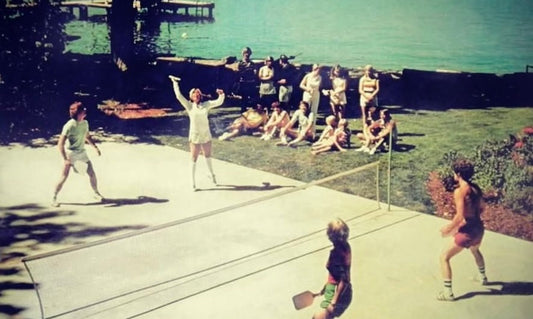
What Pickleball Looked Like in the 1970s
Take a look into the past with these unearthed photos of pickleball in the 1970s.
What Pickleball Looked Like in the 1970s
There's enough buzz surrounding pickleball now to trick the uninitiated into thinking it's only been around for a few years. Of course, true fans know that isn't true. And we have the pictures to prove it.
These images, sent to Sonoma County photographer Jim Johnson from a local OG pickleball player, tell an important story from the sport's early years.
Ah, yes, "Pickle-Ball"

This was several decades before the use of advanced paddle materials like carbon fiber or Kevlar; or even fiberglass, for that matter.
No honeycomb cores, no edge guards...and does that ball even have 26-40 holes? I'm pretty sure it doesn't.
Prepare for a smash

Clearly, someone on the right popped one up. In fairness, I imagine that's pretty easy to do when you're playing with wooden paddles and a modified wiffle ball.
But don't assume the game was primitive in the 70s...
Just look at these crossover steps!

We say: bring back this fashion. Imagine slicing a clean backhand while wearing a flannel.
James Ignatowich would be proud

Look at the guy in green. He's split-stepping, likely after movement, getting down low and readying himself for what seems to be a hard volley return.
What a low stance considering how far apart his feet are! We're impressed with his form.
Read Next: Pickleball-Playing Firefighters Nearly Hit by Runaway Car
Take a look into the past with these unearthed photos of pickleball in the 1970s.
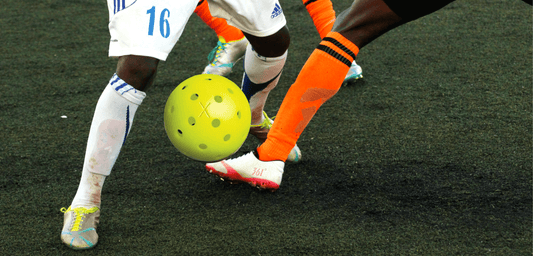
Pickleball and Soccer Share More Than You’d Think
Pickleball and soccer are surprisingly alike, and if pickleball is to even come close to soccer’s worldwide success, it should take some of footie’s cues.
Pickleball and Soccer Share More Than You’d Think
At first glance, soccer and pickleball couldn’t be more different.
Soccer’s history dates back thousands of years to the Han Dynasty; pickleball was invented in the 1960s. Soccer is primarily played with players’ feet; pickleball is a racquet sport involving “fast hands.” A soccer field is enormous at 81,000 square feet; a pickleball court is tiny at 800-880 square feet.
But look closer at the two, and you’ll notice some remarkable similarities – particularly from within the sports’ collective cultures and fandoms.
Both sport’s fans appreciate pro player skill firsthand.
Whether they played it in school or found it as young adults, soccer’s fans typically comprise people who have actually kicked the ball. Children around the world play pickup games in open fields and even in the streets.
We’re not quite at the point of pickleball running rampant among the youth, but the sport is demonstrably finding footholds in younger and younger circles.
In either case, both sport’s followers know their game isn’t as easy as it appears to non-players.
Both sports are incredibly accessible in every sense of the word.
“Accessible” is a general term, but every one of its specific uses applies to both pickleball and soccer.
Financial accessibility applies now more than ever before. In 2024, parents may spend an average of nearly $900 per year on one child’s sport.
Soccer and pickleball both demand less than $30 in initial equipment investment and enough know-how to track down the appropriate space (typically within a free-to-access park).
There’s accessibility in terms of a learning curve. Neither soccer nor pickleball can be mastered easily, but an absolute beginner can have fun at either during their very first session.
Gender equity and accessibility also deserve mentioning. Both sports feature powerful women’s teams and individual players. The US Women’s soccer team is widely recognized as one of the best in the world, while pickleball’s number one is 17-year-old Anna Leigh Waters.
Soccer and pickleball fans are remarkably patient.
Don't scoff: how many times have you heard of a “fair weather fan” in baseball, or seen a football (that’s American football) fan turn off a game they know will end poorly?
Related: Pickleball is Getting Dangerous
Meanwhile: soccer fans flock to the stadium to watch a near-scoreless game of passing and two or three shots on goal. Pickleball enthusiasts love a long, drawn out dinking rally of softly-placed, strategic shots.
One thing soccer has that pickleball doesn’t yet: proper stadium chants. But that will come in time.
Pickleball and soccer fans share an admiration for top players.
There’s a deep connection between soccer teams and their fans, who are also just as likely to worship individual players, too. Lionel Messi might be at Miami now, but he can go anywhere and still be adored by fans of different teams.
While pickleball isn’t quite at that point, the sport’s die-hard – almost cult-like – culture of recreational play should be recognizable to any footie follower.
Ben Johns, Anna Leigh Waters, and other top players are becoming household names within the community. Posts about these players garner some of the most engagement within pickleball groups and forums.
What Pickleball Should Learn from Soccer
I mentioned stadiums full of soccer fans earlier – but that’s a scene you’re more likely to see outside of the USA.
Internationally, soccer is unquestionably the most popular sport. In the US, though, it’s only the fourth most popular in terms of viewership.
Prior to the 1994 World Cup held across the United States, the host country didn’t even have a professional league.
This brings us to our final similarity: the battle pro pickleball is fighting for viewership is the same one soccer fought for American acceptance.
Bruce Bundrant of rEvolution sports marketing ran commercial operations for team-based pickleball league Major League Pickleball between April 2022 - July 2023. He also worked at DC United between 1997 - 2001.
“In those early years of Major League Soccer, our pitch to potential sponsors, media partners and ticket buyers was ‘Look how popular grassroots soccer is. It's obvious this groundswell of popularity will result in a successful pro league, so come out and support MLS.’
“This is the exact same narrative that I used at Major League Pickleball. ‘Pickleball has been America's fastest growing sport the past few years. It's obvious this trajectory of participation will result in a successful pro league, so come out and support MLP.’
While soccer may never be America’s most popular sport, it’s likely to get close.
In 2022, Major League Soccer signed a $2.5 billion deal with Apple TV. Fortune reports the 2022 FIFA World Cup final drew more viewers than the NBA Finals, the World Series, PGA Finals, Stanley Cup, and the Winter Olympics.
So what can pickleball, still comparatively in its infancy, learn from soccer’s success story in the US?
The mantra seems to be: invest in media.
Dan Lobring, senior vice president of Stretch PR, a global PR firm specializing in business and sports, says the dollars brought in via a media rights deals are a game-changer for any professional team.
“That's where they make the majority of their revenue, and that's why there is so much focus on making the TV product as sought-after, if not more so, than watching in-person,” Lobring says.
Read Next: The Calorie-Burning Power of Pickleball
“With international soccer, they are able to bring in large sums of media dollars, sponsorship dollars, ticket sales, etc., which in turn can be invested back into team/league/product to make it a better experience for all levels of fans.”
Pickleball and soccer are surprisingly alike, and if pickleball is to even come close to soccer’s worldwide success, it should take some of footie’s cues.
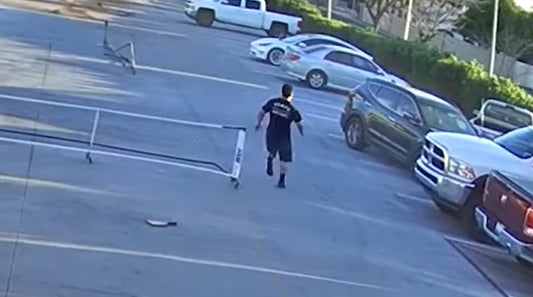
Pickleball-Playing Firefighters Nearly Hit by Runaway Car
Tempe firefighters were nearly on a collision course with an out-of-control vehicle during their pickleball break. Thankfully, the incident left nobody seriously injured.
Pickleball-Playing Firefighters Nearly Hit by Runaway Car
Imagine you're taking a well-earned break from your firefighting duties, playing some pickleball outside of the station, when an errant speeding vehicle comes hurtling in your direction.
That's exactly what a few servicemen experienced during an incident earlier this month outside Tempe Fire Station No. 3.
Fox10 Phoenix reports that within a few seconds, a speeding vehicle hit a fire hydrant and crashed into some nearby parked cars.
You can see in the video below how fast the players needed to react as they thought the car would continue in their direction:
Thankfully, these are first responders we're talking about. After the car comes to a halt, they scramble to safety extricate the driver, providing emergency medical care and potentially saving the driver's life.
Fox10 reports none of the firefighters were hurt and that investigators determined the driver suffered a medical crisis during their drive.
Read Next: Nudists Are Flocking to Pickleball
Tempe firefighters were nearly on a collision course with an out-of-control vehicle during their pickleball break. Thankfully, the incident left nobody seriously injured.
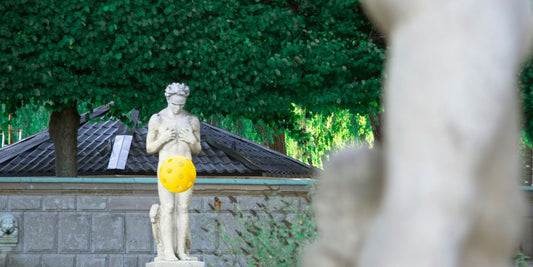
Nudists Are Flocking to Pickleball
Nudists love pickleball, and nudist accommodations and hotels are beginning to catch on.
Nudists Are Flocking to Pickleball
The weather is starting to warm...which means nudists will start to emerge in full force. And where will they convene to enjoy the outdoors sans clothing?
The pickleball court, naturally.
At the forefront of this burgeoning movement is Cypress Cove Nudist Resort in Florida, where pickleball has become nothing short of a sensation.
Mike Sullivan, a USA Pickleball ambassador and a resident of Cypress Cove, paints a vivid picture of the sport's ascent within the nudist community.
In an interview with The Pickler, Sullivan revealed that "pickleball is the biggest sport here by five times," illustrating the extent to which it has captivated the resort's residents.
- 14 years ago, the resort hosted its first game of nude pickleball
- 5 years later, the resort installed its first two pickleball-dedicated courts
- Now, six courts are available, and over 170 play all week long
Beyond Cypress Cove, nudist resorts across the country are witnessing similar transformations.
We guess nobody bothered to ask if they have to set a "no bodybags" rule. Let's hope for the players' sake, they have.
Nudists love pickleball, and nudist accommodations and hotels are beginning to catch on.
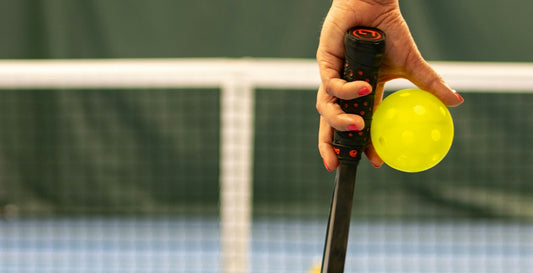
The Calorie-Burning Power of Pickleball
Playing pickleball can burn about 300 calories for every half-hour of play...but the sport's potential as an exercise is better-defined by another factor.
The Calorie-Burning Power of Pickleball
Why is it that when I go to the gym to lift weights and exert myself in crossfit-style workouts, my smart watch only reports about 700-800 calories burned...but when I play pickleball, my post-workout calorie burn totals over 1,400?
Ok...admittedly, I typically play pickleball for longer periods of time. But still.
Suffice it to say: pickleball is a serious workout, and its calories-burned-to-fun-had ratio is unquestionably high. But how high is it, exactly?
For most players, 30 minutes of pickleball burns about 300 calories.
BUT: while the number of calories burned during pickleball can vary, it's essential to recognize that heart rate is a more accurate measure of exertion than calorie count or step tallies.
Fortunately, pickleball registers as "high intensity" in terms of heart rate, indicating its potential for significant calorie burn.
A heart rate indicative of high-intensity exercise typically translates to burning around 8-10 calories per minute.
Several variables impact the number of calories burned during pickleball:
- intensity of play
- duration of the game
- individual weight
- fitness level
Regardless, pickleball consistently offers an effective cardiovascular workout. The sport's rapid pace demands constant movement, from sprinting to quick pivots and lunges.
Whether serving, volleying, or scrambling to return a shot, players maintain high levels of activity, resulting in elevated heart rates and calorie burn.
The game's dynamic nature engages muscles throughout the body, contributing to overall energy expenditure.
To optimize calorie burn during pickleball sessions, consider implementing these strategies (and consult your doctor for more tailored advice!):
Maintain Activity: Stay in motion throughout the game, avoiding prolonged periods of inactivity to sustain calorie expenditure.
Push Your Limits: Challenge yourself with faster rallies, strategic shots, and aggressive play to elevate the intensity of your workout.
Interval Training: In recreational settings, incorporate intervals of high-intensity play followed by brief rest periods to boost metabolism and enhance calorie burn.
Consistent Participation: Regular participation in pickleball sessions ensures a consistent calorie-burning routine, whether playing multiple times per week or integrating it into your daily exercise regimen.
Playing pickleball can burn about 300 calories for every half-hour of play...but the sport's potential as an exercise is better-defined by another factor.
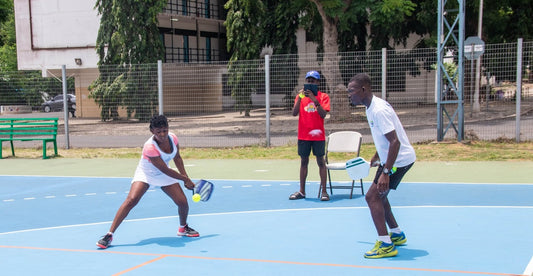
Pickleball in Africa Just Reached a Major Milestone
The inclusion of pickleball in the African Games means a lot for its acceptance across the continent. But some players sacrificed a lot to be...
Pickleball in Africa Just Reached a Major Milestone
Of all the burgeoning global pickleball scenes, players in Africa may very well show the most dedication to the sport. This is the first year pickleball has joined the lineup of sports offered at the African Games – and some teams have sacrificed a lot to be there.
Groups from Ghana, South Africa, Rwanda, Nigeria, Egypt, Benin, Kenya, the Democratic Republic of the Congo, and Sierra Leone are currently competing in Accra, Ghana – fighting not only for titles and bragging rights, but to show the world that pickleball belongs in Africa.
I'm the head ref at the GPF/African Games tournament. Teams from ten African countries are here and they are obviously excited to participate in one of the first international tourneys to be held in Africa. Several players are playing with plywood paddles and one player sold a plot of his land to fund his team's trip. The addiction is real! - Referee Ron Ponder on Facebook
Case in point: Jeremiah Pratt and the Sierra Leone team
Pratt, a pickleball enthusiast who rounded up a team for his country, says he had to sell land bequeathed to him by his grandmother in order to afford proper transportation for the Sierra Leone athletes to attend “Africa’s Olympics.”
It wasn’t just financial strain they overcame – en route to Accra, the team became stranded in Liberia due to unforeseen passage costs. Pratt managed to find them transportation, but the delay cost them their first match.
Pratt’s goal is to bring pickleball – competitive and recreational play – to schools and communities throughout Sierra Leone.
“Pickleball is part of us, my family, and we are a part of pickleball,” he told The Kitchen.
As a result of his travels, he’s already received an invite to help teach pickleball in Guinea.
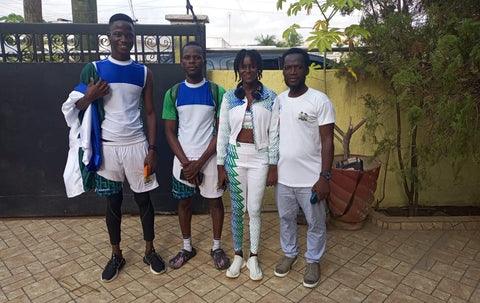
An uphill battle
The fact that pickleball even entered this year’s games was itself a tiny miracle.
The Confederation of African Pickleball (CAP), which represents the sport, only formed last August. If pickleball hadn’t cleared acceptance into this year’s games, it would not have made its debut until the next installment in 2027.
The intent was to follow MLP style play with teams consisting of two men, two women, and a coach that would compete in singles, doubles and mixed doubles.
Read Next: A Case For the Club
But four of the nine nations represented were only able to send one woman.
Zacharie Kamugisha, the owner of Silent Home Pickleball Club in Kigali, Rwanda and a founding member of the CAP, explained that due to the newness of the game, it’s been challenging to recruit enough women in a short time.
“In Rwanda, we had a second woman who desired to compete in Ghana with us, but because we are not yet registered as a federation, it wasn’t possible to find funding support in time.”
“There are no public tennis courts that can be used for free like in the USA. I had this restaurant and space, so I decided to build Rwanda’s first dedicated pickleball court out of concrete and this is how we started to grow up the sport in Rwanda. It’s amazing to be here in Ghana now, and exciting to imagine what the future of African pickleball will be like.”
The Confederation of African Pickleball is a 501 C3 organization and is still fundraising to help cover the cost of travel for the teams.
The inclusion of pickleball in the African Games means a lot for its acceptance across the continent. But some players sacrificed a lot to be...
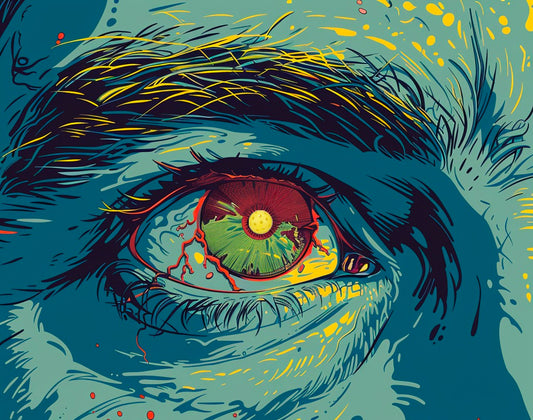
Pickleball is Getting Dangerous
I know I will hear the haters telling me to lighten up, but last week a buddy of mine was hit in the eye and...
Pickleball is Getting Dangerous
I know I will hear the haters telling me to lighten up, but last week a buddy of mine was hit in the eye and sustained 13 abrasions on his retina. Two weeks ago Cassidy Phillips sustained an eye injury he posted about in the group. He fortunately has regain his vision but is still suffering lingering effects.
The paddles are getting too powerful. The grit is so good that you can hit with more power and still keep the ball in play. If you have played against someone with the Gearbox Power Pro, you know what I mean. But the problem is, it's a perfectly legal paddle, it's USA Pickleball approved.
I know USA Pickleball is working hard to manage this, but with all the momentum pickleball has, money is flowing in, better engineers are working on the designs, and paddles are going to continue to get faster, hit harder, and outpace the ability to govern them. This will lead to more injuries and that is terrible for the game.
The Gearbox Power Pro is an amazing paddle, but contributing to the problem I have with it is the lack of noise it makes. You don't realize just how much our hearing plays a role in identifying how fast a ball is coming at you until you don't hear it. It's incredibly deceptive to play against as the ball is being hit harder than any other paddle and then, before you can even react, the ball is on you.
I state this because yesterday it was announced that USAP gave a provisional qualification to OWL paddles to be played in APP Tour events.
I have spoken with Carl Schmits, the managing director of equipment standards at USA Pickleball, on previous Kitchen Konversations about this new Quiet category of paddles as we search for solutions to the noise issues pickleball presents in some settings. I think that's great. BUT... if we are making paddles that do not make the noise we are accustomed to, I believe very strongly that there needs to be a correlation between the power the paddle has and the sound it makes. If a paddle doesn't make sound, it shouldn't have much power. If a paddle hits hard, it should be required to be at a certain level of sound.
I really don't want to have to hear or read about more members of this group or players anywhere suffering injuries playing a game that has brought so much positivity to so many of us. I will now step down, off my soapbox. ![]()
Let me know your thoughts. In the meantime, stay safe and wear some protective eyewear please.
I know I will hear the haters telling me to lighten up, but last week a buddy of mine was hit in the eye and...
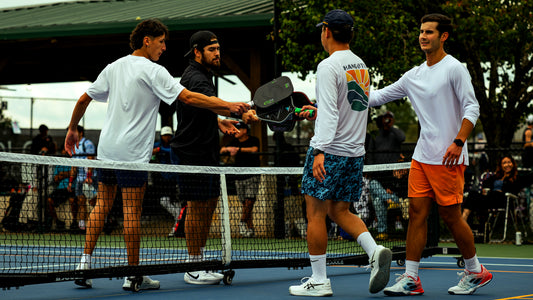
Ratings Matter
One of the reasons pickleball is so popular is because it’s just so much fun. But one of the key ingredients that makes it so...
Ratings Matter
One of the reasons pickleball is so popular is because it’s just so much fun. But one of the key ingredients that makes it so much fun is its competitiveness. Part of the charm and magic of pickleball is the inability to judge anyone before stepping on a court. It doesn’t matter if you are a six-foot-five inch professional athlete in your prime or a five-foot-two inch, seventy-seven-year-old lady with a hip replacement. There is no way to assess an opponent or their competency on the court just by giving them an eye test, you need to actually see them play. Being able to articulate what level you are, in a common language, is imperative to finding competitive games and ultimately to the success of the sport.
If you have ever played with friends where the skill levels are all over the place, you know, these games aren’t competitive and the experience is not nearly as enjoyable. (I know, there is certainly a place for hitting the ball around with friends just for fun…) Pickleball’s origins are on the courts of parks and neighborhoods all over the country. Open play has propelled this game to heights no one thought possible.
As the game grows and evolves, identifying the players who are most compatible for your level gets even more challenging. Part of the problem is this game looks so freaking easy. Anyone who has been a successful athlete looks at the game and thinks “I would be good at that.” I was guilty of it too, when I first started I watched high level pickleball on Youtube and honestly believed I could go out there and compete with them, before ever hitting my first dink. It’s the pickleball’s own version of the Dunning-Kruger effect and it is precisely why we need a rating system we can trust. Ratings are a form of shorthand, allowing us to understand who plays at a comparable level and will facilitate the competitive games we love. Problem is, there are a few of these rating systems. But not all rating systems are created equal. As a public service, I am going to rate the rating systems.
We have done our research, spoken to all the ratings companies, some of the data scientists, and their executive teams to get a deep understanding of the ratings business and what is required to make a quality rating. Before rating these systems, it’s important to clarify a few things that we learned along the way. Creating an accurate and dynamic rating system is actually quite difficult. Just like we see in other aspects of the sport, there is no shortage of new entrants into the space trying to figure it out. However, in order to have a truly universal ratings system, we must have a universal scale on which we are measuring these skills. I will attempt to break down which systems offer the most promise, why some are better than others, and what needs to happen for a robust ratings system to emerge that’s good for the sport. Let’s start with seven elements we have identified that are required in order to develop an accurate rating system.
Accuracy
A rating system is intended to measure a player's skill level. But painting with too broad a stroke will create an imbalance on the court, so the more granular a system can be, the more effective a service it will provide.
Speed
Being dynamic is crucial in pickleball because of how quickly players can improve and how quickly the limited data at the beginning of one’s journey can be measured to create a reliable rating. The ability to go up or down must be reflected in as close to real time as possible. Significant lag in data entry or change to one’s rating is problematic.
Consistency
In order to have accuracy, ideally we would all be on the same system. If we have different systems, with different ways to measure skills, and varying numbers representing the level of play, it will cause confusion amongst players. But in a free market, this isn’t a reality and competition is a good thing. But at very least, if we have different companies running their own ratings, it would be incredibly beneficial to everyone if they would at very least agree on a common language of levels. For instance, currently a 5.0 level player is recognized as an expert player, just under professional. And a 2.5 level player is at the beginning of this spectrum. Ratings should match up with the tournament structure (3.0, 3.5, 4.0, 4.5, 5.0, etc…) for this language and scale to work.
Algorithm
In order to properly measure our skills accurately, we must first devise a system to measure such information. Data scientists must weigh the importance of each instance and create formulas to articulate whether the person’s rating goes up or down and by how much. Getting this algorithm right is incredibly difficult because pickleball is scored differently than tennis and is a primarily doubles sport. This means borrowing from tennis is ineffective and accounting for different levels in partners and opponents is complex.
Data
The information that gets input into the algorithm are results and scores which arrive in the form of data. The data must be accurate, structured properly, consistent, verified, and most importantly, uploaded to the system in a timely manner. Whether it’s rec games at the park or serious tournament play, each win or loss represents valuable data to inform your ranking. The algorithm determines the importance of these scores and weighs them differently to determine your rating.
Connectivity
Critical mass is necessary to provide accurate scores. A 5.0 in Florida is currently not the same as a 5.0 in Vietnam. The more connectivity there is (players playing outside their bubbles), the smarter the algorithm gets and the more universal and trusted these scores become. It is then able to determine the correct rating and apply it evenly regardless of where in the world they are playing.
Reliability
Now that you have the makings of a good rating, how it is applied to each individual is different. For example, when playing infrequently or with players well outside their skill level, it is hard to determine an accurate rating. So having a way to measure the reliability of the rating is just as important as the rating itself.
Rating The Competition
Let’s start with the OG of rating systems, UTPR (USAP Tournament Player Ratings). UTPR is the official rating system of USAP, the governing body of the sport. UTPR might have been adequate for the sport that existed before pickleball’s explosive growth, but as the game evolved, UTPR did not. The biggest weakness is it only recognizes scores from USAP sanctioned events. When UTPR was originally launched, scores from all tournaments were accounted for, but USAP decided to limit what was measured to just USAP sanctioned tournaments. This might have been fine a decade ago when there were a limited number of tournaments a year and a handful of players playing, but now there are thousands of tournaments and millions of players. To compound the problem, the vast majority of tournament players compete in tournaments not sanctioned by USAP. Then factor in the reality that 95% of pickleball players have not participated in a tournament at all renders UTPR pretty much useless.
Because of these factors, UTPR scores tend to remain stagnant and not effective at representing one’s improvement over time. This year’s USAP National Championships in Dallas is a perfect example. There was a ton of complaining about sandbagging. But the reality was the rating system was more to blame than the players actually sandbagging.
I spoke with USAP CEO, Mike Nealy about this very matter back in October, where he admittedly answered my question with a non-answer. But one thing he mentioned was that in a perfect world, the governing body would own the rating system. But as he conceded, ‘the toothpaste is out of the tube’ and the rating system will be competed for in the free market. I reached back out to discuss UTPR with USAP and they sent me the following statement.
“USA Pickleball understands that player ratings are becoming difficult for players to navigate as there are multiple ratings options offered within the sport. Until recently, USAP has been exclusively using the UTPR rating for sanctioned tournaments. UTPR was the first and only elo-based rating for the sport. Multiple ratings options can make it difficult for players to decipher their competitive position.
As the governing body, it is our goal to remain objective and to be as inclusive as possible when working with qualified ratings platforms that will be competing in the space. As a result, while USAP is currently utilizing the UTPR rating, we are working on effective ways to sanction tournaments that are using other ratings. USAP’s goal is to work towards identifying and supporting a globally accepted rating for the sport.”
From the sound of it, the days of UTPR are coming to an end. USAP will certainly have input in which direction it goes when they choose which system to back. But if there is one thing USAP could do to ensure we have the best system in place would be to formalize the rating scale. USAP tournaments have set the standard with 3.0, 3.5, 4.0, 4.5, 5.0, and professional levels for tournaments. We would encourage USAP to recognize this scale as the universal scale, which would allow for healthy competition, all speaking the same language.
UTPR Rating: 2.83
DUPR, (Dynamic Universal Pickleball Ratings) the brainchild of Steve Kuhn, back in 2021 it launched and quickly established itself as the tech-savvy platform that would tick all the boxes laid out above. One of DUPR’s points of difference was that it took each point scored (and against) into account and calculated a rating score all the way to the fourth decimal point. DUPR did an excellent job of marketing their product and there is huge demand in the marketplace. But as many tech startups have realized, software and algorithms are not always easy to implement and deploy.

The DUPR algorithm was a black box of sorts and players ratings would occasionally fluctuate counterintuitively. For instance, a player could win a match against a lower rated opponent, but because the game was closer than the algorithm had predicted, their rating would go down. This caused some frustration in the marketplace and then the team at DUPR compounded the issue by overcompensating for the problem. They launched a new algorithm, this time using the ELO (or Modified ELO to be precise). ELO, which was mentioned in the USAP response above, is used in chess and is a way to rate players in zero-sum games. This pivot meant it no longer took each point into account, measuring only wins and losses. They also reduced the score from the four decimal points down to two. No one missed the additional decimal points, but the omission of points won/lost weakened the accuracy and was a key differentiator that set DUPR apart from the rest of the rating systems.
DUPR is officially the rating system of the PPA Tour, but Pickleball Brackets, the software that runs the majority of tournaments is no longer working with DUPR to ingest scores automatically. At one point Pickleball Brackets made it impossible for tournament directors to even download scores and enter into DUPR manually. Without these scores being uploaded DUPR will have to rely on players to input their own scores, which will have its own set of problems.
Changes have taken place at DUPR as they reorganize management. Kuhn has stepped aside and just last week DUPR announced they had received $8M in funding from a strong group of investors including Angre Agassi, providing some much needed capital. DUPR has been aggressive with a global push into South America, Australia, Asia, and Europe which gives them a first mover advantage as the game grows internationally and helps them with connectivity. We are bullish on DUPR’s prospects, but for it to be smooth sailing, it will require Pickleball Brackets and PPA to play nicely in order for DUPR to live up to its potential.
DUPR Rating: 4.53
PBR (Pickleball Brackets Rankings) are the newly created ratings from Pickleball Brackets. The creation of this rating might very well be the reason Pickleball Brackets has created friction with scores being uploaded to DUPR. Pickleball Brackets is part of Pickleball Inc, which consists of PPA, Pickleball Central, and a few other pickleball related brands.

If you are familiar with the Tour Wars, you understand that DUPR was a Steve Kuhn product and PBR is now a Tom Dundon product. You can draw your own conclusions, but it feels like the rating systems are being very much affected by the PPA and MLP merger delays.
PBR has all the tournament data from events that run through their software. There are competitors in the marketplace for tournament software, but Pickleball Brackets and Pickleball Tournaments were the two largest players and they were both acquired and rolled up into Tom Dundon’s Pickleball Inc group of companies.
One other thing to keep in mind is that Pickleball Tournaments had created World Pickleball Ratings, which has since been sunsetted. This was Pickleball Tournaments’ solution to UTPR’s limitations and took into account all tournament play, not just USAP sanctioned events. When Dundon purchased Pickleball Tournaments, the technology and algorithm that powered WPR was part of this deal. But WPR still only addresses tournament play. The ratings for millions of recreational players needs to be accounted for and we would not be surprised if the team at Pickleball Inc is looking to acquire a software solution if they haven’t done so already.

If PBR is something Pickleball Inc decides to pursue over the partnership with DUPR, this could give oxygen to the multitude of tournament software companies looking to make a name for themselves. PPA might be the pinnacle of the professional sport, but even as the premier amateur tour, they are only serving a small percentage of the pickleball playing public. With their deep pockets and huge upside, we believe that PBR could be a solid solution moving forward, but there is work to be done.
PBR Rating: 3.17
UTR-P, (Universal Tennis Ratings for Pickleball) is the leading rating system from tennis and is making their entry into pickleball. Having a robust system in place from tennis is certainly helpful, but the sports are too distinct to be able to leverage the algorithm. But their relationship with tennis clubs and facilities gives them significant reach and for tennis players migrating over to pickleball, a familiar brand to choose. Even without any real system in place just yet, they managed to have signed a partnership deal with the APP, making them the official rating of the tour. It is worth noting that APP events are all USAP sanctioned, so seeing an alliance between USAP and UTR-P is not out of the question.

Right now UTR-P is a self rated system, which goes from P1-P5. But it appears that when their software is ready, they will switch to a rating going from 1-10, 1-5 for amateur and 6-10 for professionals. Choosing to recreate the scale feels like a miss and will cause confusion in the marketplace. That being said, their credentials in tennis make them a strong competitor and we look forward to seeing their entrance into the space.
UTR-P Rating: 3.48
Next Steps
There are some clear learnings to take away. We need a common scale on which we rate pickleball players. Today that system of 2.5-8.0 seems to work for most systems and is compatible with the established tournament levels of 3.0-5.0 + Pro. Keeping these scores consistent would be helpful for onboarding new players and allow for healthy competition amongst these different systems. We hope this is something that USAP, APP, and PPA can get behind and agree upon.
One other issue that emerged was the issue of identity. Much like we see on social media, people are able to manipulate their personas and the same can be done with pickleball ratings. UTPR has the best protection against this because in order to play in a USAP sanctioned event, you must be a member of USAP, which requires an annual payment. Without a payment mechanism, preventing players from creating multiple accounts or manipulating their data will be difficult, if not impossible.
So, while we did not hear any of these companies discuss plans to charge for their services, it would make sense for them to move towards this model. Even a nominal fee, where a credit card is placed down and one’s true identity confirmed, would prevent the majority of fraudulent activity and improve the accuracy and trust of these systems.
After speaking to so many really smart and capable data scientists, executives, and investors in the space, I am confident we are on our way to a competitive marketplace with robust and capable rating systems working hard to improve the way we measure our skills. I just hope these companies are invested enough in the sport itself to recognize that healthy competition makes both their businesses and the sport of pickleball, better.
Rating the Rating Systems
One of the reasons pickleball is so popular is because it’s just so much fun. But one of the key ingredients that makes it so...
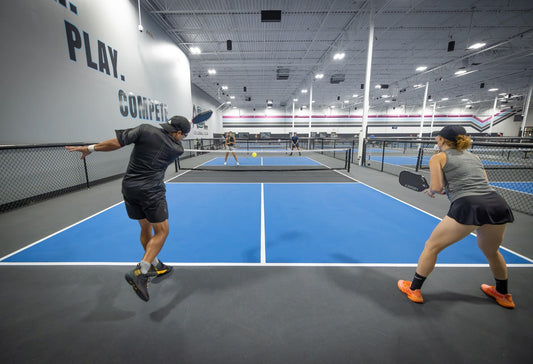
A Case For the Club
I've never been one for the country club scene. I’m just not a country club kinda guy I suppose. I wasn’t raised as a country...
A Case For the Club
I've never been one for the country club scene. I’m just not a country club kinda guy I suppose. I wasn’t raised as a country club kid and the very notion of exclusivity and shelling out obscene amounts of cash for the privilege never quite sat right with my frugal nature, which I of course pass off as “down-to-earth” sensibilities.
This hasn’t always been the case, I used to see the merits of a club membership. In my 20’s I played a ton of golf, just about every weekend you would find me out on the course. I would tell everyone how much I loved the game. I was seriously considering joining a club. But then my girlfriend broke up with me I immediately stopped playing. It turned out I didn’t actually love golf, I just hated spending time with her. Golf wasn’t my passion, it was just an excuse.
Fast forward thirty years and pickleball is my new obsession. I love it. For real this time, it’s no excuse. I discovered the sport shortly before Covid. At first I dismissed it wholeheartedly. Even when my kids wanted to go hit the ball, I was reluctant to play the game. It sounded so stupid, “pickleball?” Really? With its annoying sound, tiny little court, archaic looking paddles, not to mention the only people I knew who played were a generation my senior. I had very little interest.
I might have never given it a shot had it required me to fork over a bunch of money like I had done years before with golf. But fortunately, pickleball presented me with a zero-spend opportunity to kick the tires. I was invited out to a local park to play with a friend. He met me there with his new Selkirk bag which had a couple of paddles in it. He was generous enough to lend me one, which just so happened to be an Onix Z5. The park had permanent lines and a portable net. My friend was relatively new to the sport so it struck me as odd he had multiple paddles and this awkward, red bag made specifically for pickleball.
The outing was great, we had fun, and we met some nice people. We played a few more times after that and before I knew it, I was digging pickleball. Who knew? Next step was to buy my own paddle.
Buying the first
I knew nothing about paddles so I went to Dick’s Sporting Goods and looked at the options. Turns out I wasn’t the only one who knew nothing about paddles, the associate at Dick’s who was assisting me with my purchase also knew nothing about pickleball paddles. This was 2020, so there weren’t even that many to choose from. I wasn’t prepared to spend $150+ on this silly game just yet. At the same time I didn’t want to be perceived as the cheap guy with the wooden paddle. So with my options limited, I did what countless others have done before me, I purchased the only paddle I had ever played with, the Onix Z5.

The Z5 became my first paddle, a distinction the paddle has for thousands of players who started playing this sport during the Covid years. The paddle only cost me $70, but it made me feel like I was officially a pickleball player, priceless. Owning your own paddle is definitely something you have to do in order to call yourself a pickleball player. I’m not sure of the equation but there is certainly a correlation between how many paddles you own and how obsessed you are with the game.
“Hello, my name is Jason and I own dozens of paddles.”
See, as you improve, you pay attention to what paddle other people are playing. The better they are, in some illogical recesses of our brains, the more we attribute their shotmaking success to the paddle they are playing.
So you enquire about the paddle and they always tell you ‘how amazing it is’ and ‘how much they love it.’ This sport is filled with evangelists.
You extend your hand and ask if you can hold it. They nod and place it carefully in your hand as if they are handing over their newborn baby. It feels amazing, it feels so much better than your Z5. It’s got a gritty, carbon fiber face, the handle has overgrip, and there’s tape over the edge guard. Your friend proceeds to explain this tape is there to protect the actual edge guard, which is there to protect the edge. This seems redundant, but you don’t want to sound naive so you move on and ask to hit a few balls. You exchange paddles, tossing him your Z5 with the same care you might toss someone a broken golf tee. With the first dink it feels like you’re playing a different sport, you immediately fall in love with this paddle. Even though it has only been a few weeks, this will be the last time you play with your Z5.
You know damn well that it’s not the paddle that makes your friend a better player than you, it’s the hours of drilling he does. But you also know that drilling is boring, so you order this exact paddle the second you get home.
When your new paddle arrives, you realize you are now the proud owner of multiple pickleball paddles and you’ll need a bag. A few minutes later an order is placed and a bag is on the way. At this point you believe you are fully invested in pickleball. However, you are wrong, you are just getting started.
Because next it’s the shoes, eye protection, overgrips, edge tape, lead tape, water bottle, hat, and anything else you are served on social media that might make you play better. The spending seal has been broken and only now are you actually all in on pickleball.
This was me. But going back to my hesitancy to spending money, there was a line I was not willing to cross. Paying for a club membership.
Fee to Play
I really believe that one of the beauties of this game was how accessible it is. The fact I could go out to the public park and play for free was part of the allure that got me out there in the first place. Why would I spend money to play at a private club when the local park has everything I could ever want? It was part of the reason I could justify spending money on paddles (and bags, shoes, glasses, etc…)
But things change. The popularity of the game has exploded and no longer can I simply head down to the public park and expect to get a court. Open play is still taking place, but as my game has improved, the level of play at the park hasn’t. New players discover the sport every day, and while that is fantastic and I was once one of those players, it doesn’t make for competitive games.
It became more challenging to find competitive games and available courts to host them. I live in Atlanta and a few private facilities have been built to help accommodate this demand, with many more being built to meet the exponential growth of this sport.
Weather or not
I was still hesitant to join a club, not just because of the fees, but I had romanticized the idea of open play and didn’t want to turn my back on that aspect of the game. But as winter rolled around and the crisp autumn days turned to rainy, cold ones, I saw more and more of my pickleball crew take the leap and join a club. Ace Pickleball was a brand new, fourteen court, indoor facility about 20 minutes from my house without traffic. Factor in Atlanta traffic and if I were to go at the wrong time it could take me an hour to get there. It wasn’t exactly in the neighborhood.
But after a few cold mornings in the low 30’s and rain in the forecast, I knew if I wanted to play I was going to need to join a club somewhere. Lifetime Fitness was closer to my house, but there were only three courts and reserving a court was problematic. Atlanta Pickleball Center was a ten court indoor facility in midtown, but open play wasn’t their thing and being in town would mean more traffic to deal with.
I dropped in a few times to Ace, to see how I liked it before making any decision about membership. It immediately exceeded my expectations. Having a new facility like Ace attracted the best players from all over town, migrating there like moths to a flame. But not only was the talent there, which had been difficult to manifest at the public park, but the staff at Ace did a great job of segmenting players by level and making everyone feel like they were part of the community.
We talk about community a lot in pickleball. The Kitchen is a community and we have seen how impactful it is to have a group of people that share a passion like we do for pickleball. It doesn’t mean we don’t have our differences, people come from all walks of life, political ideologies, and backgrounds, but the common denominator of pickleball is what keeps this community such a positive one.
Membership has its Privileges
With great trepidation, I decided to join Ace Pickleball. I told myself it would just be for the cold winter months, convincing myself this was merely a means to an end and I would return to my outdoor roots when Spring had sprung.

I typically play in the mornings, starting my work day around 10 gives me a chance to play for 1.5-2 hours most mornings. Lucky for me, traffic flows in the opposite direction in the mornings, so there is little traffic to deal with and I can get to Ace in twenty minutes from my house.
The first day, with the temperature hovering around freezing, I got there around 8am. I hadn’t done my research so I had no expectations in terms of level of play. But I was pleasantly surprised to see some familiar faces, some new faces, and some excellent quality of play. I play at a 4.5-5.0 level, so finding competitive games typically requires some planning. But that morning I played some high level, really competitive games for a couple of hours straight.
It was nice to play with new players, see new styles, and discover some good players I didn’t know were in town. I went back the next day. And the next. And the next.
The weather was cold, but without a viable indoor option, I would have found a way to make it work outside. But now, with a warm and dry Ace only 20 minutes away and some of the best competition in town, I found myself there each morning. But it really didn’t matter what time I showed up. Some days it was in the afternoon or mid morning, there was always a decent crown and always quality play.
In the short 6 or so weeks that I have been a member, I have met dozens of players who I have played with and against and exchanged numbers. Many of my crew from the public park have migrated over as well.
Hundreds of people walk through the doors each day, all there to get their fix of pickleball. But what I noticed last week and what prompted me to write this, was the amount of joy I saw at Ace. It is not often you see so many people, with a diverse mix of ages and races and socioeconomic backgrounds all participating together. Every single one of them are so freaking happy. I made it a point to just look around and take in what I was witnessing. I canvassed the expansive room, there was laughter, cheering, high fives, and paddle taps proliferating about.
When I look back at the public park, while it was an amazing entry into the sport, it wasn’t like this. Ace feels like an evolution. As much as pickleball brings people together, this club has amplified the euphoria that comes with great pickleball.
Becoming a member of a private club is a commitment to the sport, and perhaps that is why it feels so different from the play at the public park, where some people are new or still figuring the game out. Regardless of the reason, there is no doubt that a difference exists.
OMG
I’m not a religious person, but pickleball has done for me what I believe religion does for many people. It has provided me with a community of people who share a passion. It has provided me with a routine, and something to look forward to each day. It has become an important part of my life, surrounded by good people I now call friends, it makes me healthier, and certainly happier.
As more and more of these clubs open up around the country, (and there are plenty coming) I believe we will see players find their way to this version of the game, an inside, climate controlled, always accessible, and community driven experience.
My overall experience has been overwhelmingly positive. There are only two negatives I have experienced thus far. One is the wait times during busy hours, which really hasn’t been too bad, certainly no worse than at the public park. The second negative (and I’m not even sure this is really a negative) is I tend to lose track of time. Much like walking into a casino, I can play for three hours and not even realize it. I have seen people play for six or seven hours. Which is awesome, but also a little concerning. Getting into a rhythm and playing competitive games can really take hold of you and the mantra of “one more game” proves pertinent, this game is very hard to walk away from.
As someone who was skeptical about the club experience, I have to admit, I was absolutely wrong. My routine has taken hold, my game is improving, my social network is expanding, and everyone I interact with is having so much fun.
To think we are just in the infancy of the club experience is exciting. I can’t wait to see where these clubs can go with personal training, education, clinics, lessons, tournaments, mixers, ladders, round robins, food, drinks, and whatever else they can dream up to make our pickleball journey even greater.
Now, off to play some pickleball. See you at the club.

I've never been one for the country club scene. I’m just not a country club kinda guy I suppose. I wasn’t raised as a country...
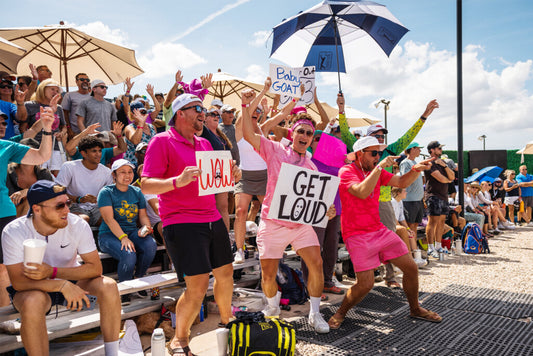
Pickleball’s Gold Rush
Pickleball is more popular than a Kardashian at an NBA afterparty. Yeah, I said it. It’s just that popular. The sport has continued to grow...
Pickleball’s Gold Rush
Pickleball is more popular than a Kardashian at an NBA afterparty. Yeah, I said it. It’s just that popular.
The sport has continued to grow year after year after year. People fall in love with this game and what’s fascinating is they do so for all different reasons. For ex-athletes it is the chance to compete again, for many it’s a chance to socialize and make friends, some people use it as their core exercise routine, and for others it is simply a new challenge or skill to learn.
But the impact pickleball has on people is quite remarkable. Not to be hyperbolic, but pickleball changes people’s lives and for some, it even saves them. I know, I know, how cliche. But it’s the truth. We hear these stories all the time in The Kitchen and it’s one of the many reasons why we love this game so much.
As the popularity of the sport continues to defy logic, thousands of new players are introduced to the sport every single day. A crazy high percentage of these new players instantly become enamored. They want to learn about it, understand where it came from, how to improve, where to play, what paddle they should buy, and a thousand other questions they ponder as they go to bed at night dreaming of when they will hit the courts next.
Who Cares?
Something the vast majority of these new players don’t care about are the ins and outs of what has been dubbed “The Tour Wars.” Whether or not you know your ‘Dundon’ from your ‘Kuhn,’ strap yourself in because it’s important we document just how pickleball got to this crazy place we are today.
With all the drama and infighting in professional pickleball, a broadcast network just might offer a Reality Show before they would an actual sports broadcast. But it’s important to keep in mind why we are seeing such chaos in the sport. These very successful and wealthy individuals jockeying for dominance in the space understand this is the pickleball equivalent to the gold rush. Getting this “right” in the short term is less important to their long term prosperity than getting the “rights” to build out and lead the commercialization of the sport. If pickleball continues to maintain the trajectory it is on, and all indications point to the affirmative, we are going to have a nation (and eventually a world) of pickleball players and fans.
 Image: The PPA Tour: Mesa, AZ. Credit: Sports Travel Magazine.
Image: The PPA Tour: Mesa, AZ. Credit: Sports Travel Magazine.
When critical mass is achieved, the network effect kicks into full effect. The relentless influx of new players, drawn to the courts are the beating heart of this phenomenon. Whether exposure takes place in your neighbor’s driveway, a local park, private club, company team building event, or middle school PE class, a chain reaction occurs, where exposure begets addiction.
One thing that makes pickleball such a democratic and accessible sport is the concept of ‘Open Play.” Knowing there are parks where you can play at any time without having to organize your own game or be a member of a club has fueled the growth of the game exponentially. One can only compare this to basketball’s pick-up scene in terms of accessibility. Like most participatory sports that are competitive (and yes, pickleball is competitive) players have a strong desire to improve. We are seeing a burgeoning industry of clinics, camps, and coaching as players seek the skills and strategies to improve. Infrastructure is being built all over the world to accommodate the demand. The next logical step is the professionalization of the game and with that, broadcasting a competitive product that the world will want to watch.
From the outside it might seem like the MLP and PPA merger deal is just two billionaires fighting. But in a way, the soul of the sport is up for grabs. A victor will be crowned because this has now become a zero sum game, the days of playing nice together and sharing your toys are long gone. When a victor is declared, and it’s coming soon, the influence of how the game is played at the highest levels will matriculate down to the parks, local tournaments, rec centers, and countless other places to play all over the world. So while you might not care about the professional game of pickleball at the moment, what happens next and how we got here does matter. So allow me to set the stage of how we got here and where things are headed.
Altruistic Pickleball
Let’s start with Steve Kuhn, the guy who not only saw the potential in the sport, but had the means (and when I say means, I mean money) to do something about it. I had the good fortune of meeting Kuhn three years ago before MLP had formally been introduced to the world. Steve is a frenetic bundle of energy and bursting with ideas. A boisterous manchild, with a heart of gold, brimming with enthusiasm for this sport. But you must remember, three years ago pickleball was still viewed suspiciously by the few who had even heard of the game.
 Image: Steve Kuhn and Major League Pickleball (MLP) at the NYSE. Credit: Major League Pickleball.
Image: Steve Kuhn and Major League Pickleball (MLP) at the NYSE. Credit: Major League Pickleball.
Pre-pandemic pickleball was nascent at best. Most people were oblivious to the sport’s existence and those who were aware were retirees who had found this new game to occupy their time. It was like Mahjong or Bridge with knees that had yet to be replaced. The version of the game being played at retirement centers and adult living facilities was a far cry from the game we see today.
These seniors, many of whom no longer had the stamina for golf, were the core players. Paddle technology was not really a thing, a nice cheese board would have performed better than some of the paddles being played at the time.
Back in 2015, while these seniors were monotonously dinking balls across the net to one another, Steve Kuhn saw what very few others did, potential. Kuhn had made his money as a hedge fund manager, but was also an avid poker player. He was hardwired for assessing and taking risks.
His first investment in the space was Dreamland, a sprawling plot of land south of Austin, TX in a town called Dripping Springs. He built four covered pickleball courts as well as a mini golf course. The property was built with small cabins overlooking the courts where he invited some of the best players in the world to live and train. Kuhn understood the need for players to be within close proximity of one another in order to improve not only their skills, but the game itself.
Know When to Hold ‘em
Kuhn had bore witness to the explosion of poker. Chris Moneymaker, the fortuitously named accountant who shocked the poker world back in 2003, won the World Series of Poker’s main event and changed the game forever. Moneymaker’s victory was the tipping point to poker’s rocketship-like ascendance into the mainstream.
Moneymaker had mastered his craft by playing online, a phenomenon that had yet to gain mainstream acceptance. But the ability to play multiple hands at all times of the day (and night) provided the critical mass of reps needed to compete with the best.
Kuhn had a vision for Dreamland to house the best pickleball players and allow them to hone their craft, much like the way Moneymaker did with online poker. Dekel Bar, Rob Nunnery, Vivian David, Lina Padigimaite, DJ Young, and others moved in and Kuhn’s plan was underway.
Image: Steve Kuhn opening Dreamland in Dripping Springs, TX. Credit: Dripping Springs News.
Somewhere in the deep recesses of Kuhn’s mind, there was a web of ideas around pickleball that were all connected to one another. The first of which was Dreamland, then DUPR, (originally called Dreamland Universal Player Ranking, only later to be renamed with Dynamic replacing Dreamland). DUPR provided some much needed structure, using various data points and algorithms in assessing players skill level, establishing a more competitive and fair level of play. Kuhn, who is a mathematical savant having studied game theory and statistics while at Harvard, helped in calibrating the black box calculus which would power DUPR.
Next to follow was a new spin on the professionalization of the sport. Instead of mimicking the tour of individuals in professional tennis, Kuhn believed there was huge potential in a league with a team format of play. With Dreamland and DUPR in place, Steve began seeking investors in his next idea, Major League Pickleball. Teams provided a multitude of benefits, including the ability to raise funds by selling teams. In 2021, eight teams were made available and fundraising began, teams were being offered for $100K. By the end of 2023, the value of these teams had grown 1200% to $12M. Investors poured in, from wealthy pickleball players to A-list celebrities like Tom Brady, Kate Upton, LeBron James, Brene Brown, Drew Brees, Heidi Klum, Eva Longoria, and dozens of others jumping onto the pickleball bandwagon. The press releases were fast and furious, helping to propel the sport and the league into America’s collective consciousness.
 Image: Drew Brees and Steve Kuhn. Credit: Forbes.
Image: Drew Brees and Steve Kuhn. Credit: Forbes.
Back in 2021, the PPA and APP were new and competing to establish themselves as the premiere professional tour of pickleball. But it was early days and pickleball was still seen as a hobby, playing the lottery was a more secure career choice than playing pickleball for a living. Then Major League Pickleball entered the chat. Kuhn had laid the groundwork and announced the first MLP event would be held at his home court, Dreamland. With a number of top players living onsite, participation was virtually guaranteed. Not only were players going to be paid to participate (if they were drafted), rewarded if they win, but they would also be awarded shares of the league for participating, giving them a vested interest in seeing Major League Pickleball succeed. This was a more than generous offering from Kuhn, a characteristic which would ultimately prove to be his fatal flaw.
It is important to note that APP at the time had no contracts with players, if you wanted to compete at an APP event, you were welcome to do so. The PPA had signed deals with players, ensuring top talent would play their events and in return, they would be compensated for their time. These contracts were ‘exclusive,’ but provided plenty of room for players to still participate in playing elsewhere if they chose to do so. It was normal to see Ben Johns playing APP events, which is something recent fans of the sport might not be able to wrap their heads around today.
The first MLP took place in November of 2021. And it was a resounding success, with the finals being broadcast on CBS Sports Network. The team format proved to be an interesting twist on the sport and the introduction of rally scoring moved the game along, making the viewing experience entertaining and easy to understand, especially for viewers who were not familiar with the game. Rally scoring was something Kuhn was adamant about, he believed it would be better for broadcasting, would be easier to understand for spectators, and be easier to onboard new players who might struggle with the complexities of traditional sideout scoring.
Hands Battle
As Kuhn and the MLP team were celebrating their inaugural event’s success, little did they know the CEO of PPA, Connor Pardoe, the young entrepreneur who had founded the league only the year before, was in discussions with a new investor, Tom Dundon.
Dundon, the Texas billionaire who had made his money in the automobile loans industry had also made significant investments in more consumer centric businesses like TopGolf and Carvana and was the owner of the NHL’s Carolina Hurricanes. Dundon had discovered his love for pickleball and with a more aggressive business approach, looked at rolling up strategic businesses to ensure success in the sport. Dundon’s business approach stood in stark contrast to Kuhn’s more altruistic and emotional version and we would see this play out over the next two years.
 Image: Tom Dundon at a Carolina Hurricanes hockey game. Credit: NHL.com
Image: Tom Dundon at a Carolina Hurricanes hockey game. Credit: NHL.com
 Image: Connor Pardoe, CEO/Founder of The PPA Tour. Credit: NYMag.
Image: Connor Pardoe, CEO/Founder of The PPA Tour. Credit: NYMag.
MLP had found a way to thread the needle as a ‘league’ and stay out of the competing tour business, managing to get the best 32 pickleball players in the world playing together. As Kuhn celebrated MLP’s success, he was about to learn firsthand about Dundon’s approach to business. The first sign of trouble was at the end of 2021, just weeks after MLP’s inaugural event, while everyone was still buzzing from the success, the PPA sent out new contracts to players.
These contracts were different from the previous year’s. Exclusivity clauses were tightened. In the previous PPA contracts players had 4-6 exemptions to play events outside PPA Tour stops. This version of the contract required PPA contracted players to get permission to play any non-PPA events, (presumably this included MLP). But there was little clarity as another notable detail in the contract was the incredibly tight deadline for players to make such a significant decision. Few of these players had any representation, agents weren’t a thing just yet and most of these players being offered contracts were inexperienced in dealing with such offers. The need for the players to have representation, whether agents, lawyers, managers, or even a union was apparent, but time was ticking and the vast majority of players who were made offers signed the deal.
While this caused a flurry of consternation amongst top players on the PPA Tour, these contracts, in hindsight, were less aimed at the players, and more at Kuhn and MLP. But this hardline approach, which stood in stark contrast to Kuhn's, would come to define how many players viewed the PPA. But Dundon was a man with a plan and he was just getting started. He went on a buying spree, he purchased Pickleball Central, the largest retailer in the space, then formalized his majority investment in PPA. He eventually had rolled up TopCourt, an online training platform, and both the tournament software companies with the largest followings, Pickleball Tournaments and Pickleball Brackets. In a matter of weeks, Dundon had built his own pickleball empire.
Kuhn, who’s vision for pickleball was clearly being threatened, met with Dundon at his offices in Dallas. That meeting, by all accounts, did not go well. Kuhn had lobbied for PPA contracted players to be allowed exceptions to play MLP events. Kuhn made the case that this ‘league’ was a compliment, not a competitor to PPA. Dundon rejected this premise and didn’t even consider Kuhn’s case. Dundon had strategically aligned these players, with his money for their salaries, to play the PPA Tour exclusively and he did not see any reason to provide Kuhn any concessions. This was Dundon’s zero sum approach and Kuhn, the altruist who believed his view was right for the sport, had a hard time processing this new reality. This was the start of the Tour Wars.
Good Vibes Only
With PPA players restricted to PPA events only, MLP proceeded without the top talent in the game. But because MLP is a team event, the lack of star power did not limit Kuhn’s ability to press on, with three successful events being held in 2022. MLP’s ability to weather this storm even without the top names in the game proved there was viability in the team format. It appeared Kuhn had a strong hand to play here. Then, in late 2022, Dundon played his cards just right and the PPA announced they would start their own team based league called VIBE. Whether VIBE was Dundon playing the pair of aces or was a complete bluff is still not fully understood, but MLP didn’t have a strong enough hand to call them on it and the unthinkable happened, a merger between Kuhn’s MLP and Dundon’s PPA/Vibe was struck.
Vibe, which basically consisted of some stickers and hoodies the PPA had printed up, would be retired before it ever became reality. And for this concession, MLP would part with significant equity, extend the pool of teams to 24, and give PPA ownership of four teams. In return, and most importantly, this would allow all PPA players to participate in the six agreed-upon MLP events planned for 2023.
Going All In
So at the start of 2023 it appeared as if all was good in the world of pickleball. Unlikely bedfellows, but there was optimism this was all working itself out. Dundon continued plotting his dominance of the sport through strategic partnerships and acquisitions while Kuhn grew the DUPR brand into the de facto rating system in the sport. The first half of the season went according to plan. But in the background, the deal to formally end the Tour Wars still had not been consummated, with each side placing blame on the other. Frustrated with the way he was being sidelined and knowing PPA had not locked up players with new contracts for 2024, Kuhn made his move.
On Thursday, August 26, 2023, while PPA was kicking off their tournament in Kansas City, all hell broke loose.
Jared and I happened to be in New York City that week for an event and were scheduled to have lunch with Steve Kuhn and MLP CEO Julio DePietro. We expected it to be a casual lunch, but little did we know Kuhn had begun sending very generous offers to players to make them exclusive to MLP. How this all went down is still hard to decipher, but it is clear Kuhn took a page out of Dundon’s playbook and pushed all in. Brooks Wiley, the commissioner of MLP had flown to Kansas City and was getting players signed with MLP on the spot. It was only when one of the loyal PPA players alerted Connor Pardoe to the offer they had received that Pardoe and Dundon were aware of the attempted coup. Pardoe, who was in Utah with his young family, ran to the airport without any bags or preparation, and flew to Kansas City to fight for his business.
The players, who had historically had little leverage in contracts up to this point, were all of a sudden in pole position. It was helpful that at this point, many of these players had agents and some played a pivotal role in moving blocks of players over to MLP. Outrageous numbers and guaranteed contracts were being bandied about. At first it was the top PPA contracted players getting the big money, Riley Newman, Irina Tereschenko, Anna Bright, Tyson McGuffin, and James Ignatowich all signed with MLP. But a few of the top players, including Ben Johns and Anna Leigh Waters, understanding their strong position as ‘must-have’ players, waited to hear Pardoe and Dundon’s offer.
The next few days were absolute chaos. We managed to interview Steve Kuhn at DePietro’s home in SoHo on Friday morning as he walked us through what was happening in real time. Kuhn, reverting back to his altruistic instincts, positioned the generous contracts as what was best for the players and best for the sport, including the player’s healthcare and travel costs being fully covered.
There was no doubt this was good for the players. But not all MLP owners had signed off or even been notified of the aggressive move and were caught off guard. Meanwhile, Pardoe was desperately scrambling to lock up as many players as he could sign and as fast as possible. Pardoe and PPA, while blindsided by these offers, had an advantage in Dundon being the only signoff needed to extend contracts. Pardoe managed to sign the ‘must-have,’ best two players in the world, Johns and Waters. Then followed those signing with Catherine Parenteau, Matt Wright, Lucy Kovalova, Tyler Loong, and Alyce Jones. The signings continued, but it was the signing of Dekel Bar, a long-term Kuhn loyalist and original Dreamland resident, that surprised many and seemed to give PPA new life. Next was the signing of the duo of Julian Arnold and Lauren Stratman, Arnold having been the star of 2023’s first season leading the Los Angeles Mad Drops to the championship as the MVP.
While Pardoe had done just enough to fend off the coup and make this a fight, the flurry of signings continued. MLP extended their reach beyond the number of players needed for a viable league and well beyond household names with over a hundred signings. With each contract MLP signed, the more pressure it put on owners, like a business dinner where the client orders the most expensive bottle of champagne to celebrate, knowing full well you are the one picking up the tab. The PPA countered by leaning into the world of tennis and betting the name recognition would draw tennis fans over to the world of pickleball, signing players with significant resumes like Jack Sock, Donald Young, and Genie Bouchard.
Amongst this chaos, two owners stepped in to take a significant stake of MLP with a promise of $50 million investment into the league. Jason Stein (NY Hustlers) and Al Tylus (DC Pickleball Team) jumped at the opportunity to invest, sharing the vision of the pickleball future Kuhn had laid the foundation for with MLP.
With the new money having been promised, two new voices had a say in the conversation. The spending came to an end and whether Kuhn folded or played his hand the way he had intended remains a mystery, but with the help of prominent owners like LA Mad Drops’ Zubin Mehta, DC Pickleball’s Tylus, MLP CEO DePietro, and NY Hustlers’ Stein, the two sides found their way back to the negotiating table and patched up their differences.
Instant Replay
MLP Atlanta took place to great fanfare, but the enormous salaries that had been guaranteed hung over the sport as the MLP’s financial realities were becoming clear. MLP owners, especially those who had signed up early, knew they were in for a wild ride, but they had not signed up for the price tag to match. There was a fracture amongst ownership, some sticking by the leadership and vision of Kuhn and others, including the four PPA appointed teams, who were seeking more financial responsibility with their investment. Ultimately it appeared both sides had extended their spending power well beyond what was financially viable and a merger was the only viable solution. An agreement was reached and a legally binding memorandum was signed while the lawyers worked out the details and contracts drafted.
 Image: Celebration at a Major League Pickleball event. Credit: Major League Pickleball.
Image: Celebration at a Major League Pickleball event. Credit: Major League Pickleball.
With the star studded list of investors in MLP, there was too much at stake, both financially and from the caliber of investor, to let MLP suffer from what would have been inevitable if it were simply based on revenues. But whether you were putting your money on MLP or PPA, it’s a bet on the future of pickleball. Betting that future players will turn into future fans. Fans who will watch on television, see the ads, buy the products, go to the camps, and return an investment on these big bets.
But just as things seemed to have calmed down and there was peace once again, days before MLP Dallas was to begin Kuhn called a loyal group of owners. On that call he went on to float the idea of selling four new teams. This had always been on the roadmap, but an acceleration of the plan to raise more capital would certainly not have been in line with the agreement of the pending merger. Why Kuhn even floated this idea is unclear and seems like a clear overstep, breaking whatever trust there was between the two camps. In a vote of no confidence, Tylus, who was on the MLP board, but not on the call in question, immediately resigned upon hearing the news. DePietro also resigned his role as CEO. The news spread fast and it threw another spanner in the works, eroding trust, and putting the merger in jeopardy… again.
MLP Dallas, which was held at Brookhaven Country Club in Dallas, Texas, kicked off the week before USAP and PPA’s presentation of the US National Championships. MLP once again ran smoothly with big crowds and exciting matchups. Kuhn was notably absent, but the rest of MLP leadership was there including the commissioner, Wiley.
But with all the drama and uncertainty, the rules of how teams would be selected between Premier and Challenger had changed. No longer were these leagues going to be based on merit as had been the plan starting in 2023. So with only San Clemente left for the year, and nothing consequential at stake for the teams to play for, MLP called an audible and held the season 2 playoffs, inviting only the top teams in their respective divisions to play for the championship.
Thrive on Chaos
I write this as the last days of 2023 fade away and there is still no word on the merger being either on or off. Team owners have deep pockets and the promise of $50 million from Stein and Tylus will keep the league afloat for sometime. But these MLP owners are wealthy because they are also shrewd investors. The bloated salaries that were promised as contracts went out during the battle at Kansas City would eat up a considerable chunk of this investment.
 Image: Top ranked pro Collin Johns at a PPA Tour event. Credit: Carvana PPA Tour.
Image: Top ranked pro Collin Johns at a PPA Tour event. Credit: Carvana PPA Tour.
Part of the negotiation for the merger was for DUPR, which was at one point, under the same ownership umbrella as MLP, would not be part of the merger and remains under Kuhn’s leadership. But after Nationals, Pickleball Brackets, which is owned by Dundon and is the software running a huge percentage of tournaments, stopped allowing the score data to be uploaded to DUPR, effectively cutting off DUPR’s oxygen.
Then news that the commissioner, Brooks Wiley, a long time confidant of Kuhn’s and an integral part of MLP’s success, had been fired. Then on November 28 an email went out from what was left of MLP leadership to all MLP players under contract starting in 2024. This email was strikingly reminiscent of the one from PPA back in December of 2021. The gist of the email was the contracts that had been signed were unsustainable for the league and a 40% deduction in both salary and workload was being requested in order to ensure the solvency of the league. Players were, just like in December of 2021, given an incredibly short timeframe to make a very important decision. But this time the players were more savvy, many represented by agents, and with much more on the line. One of the incentives offered in opting to take the reduction was the privilege to play on the PPA Tour. Not accepting the salary reduction would leave players out of all PPA events.
The MLP contracts, which were generous, required 200 days of work from the players per year. PPA and MLP have both announced the formation of their respective camps, which would be run by contracted players to work off these days and justify the generous wages.
Jill Braverman, one of the more outspoken players and former CEO of DUPR, spearheaded a player collective, attempting to bring the power of collective bargaining to the side of the players. It is unclear who this collective actually represents as the players, who are calling for transparency, don’t want to make their involvement in the collective public. Meanwhile, the deadline MLP had insisted upon came and went and has now seemingly been extended with a decision now having to be made January 31, 2024.
Behaving as if the merger is happening, MLP decided to determine Premier and Challenger teams through a Dutch Auction, which was essentially a fundraising. Teams bid, blind, what they were willing to pay to have a spot in the Premier. The top twelve bidders would retain the spots, paying what the lowest of the twelve teams had bid. As it turns out, the lowest bid was $400,000 and the exercise conjured up $4.8 million just like that.
Interestingly, the PPA has communicated in subsequent emails that the merger is expected to take place and with such a positive response in players agreeing to the 40% reduction, the PPA is now full of players. The email goes on to say MLP is no longer requiring players to take the pay cut, even offering some that took the cut to revert back to the original offers the MLP had made.
I have to believe a merger takes place and PPA’s leadership of Dundon and Pardoe will have a heavy hand in how MLP looks moving forward. Their ability to make PPA the clear leader as a tour and the financial acumen they have demonstrated might not be the favorite of some players, but will certainly resonate with most MLP owners cutting the checks.
So here we are. Lots of drama that the vast majority of pickleball players will never know or care about. But it is important to understand what has happened, who the players are, and why it has all played out the way it has. It’s been a wild ride and there are plenty of details that I either missed or simply couldn’t fit into this recap, but the essence is accurate to the best of my knowledge.
It is clear that Steve Kuhn will do everything in his power to do what is best for the sport and the players. Pardoe and Dundon also want what is best for the sport, but in contrast to Kuhn, will make decisions based on financial realities and look out for the long-term health of both the game and their business interests.
As we wait for the resolution of the Tour Wars, I’m just excited to be playing this amazing sport. I hope you are too. Pickle on.
 Image: Fans cheering at the PPA Tour: Texas Open. Credit: Carvana PPA Tour.
Image: Fans cheering at the PPA Tour: Texas Open. Credit: Carvana PPA Tour.
Pickleball is more popular than a Kardashian at an NBA afterparty. Yeah, I said it. It’s just that popular. The sport has continued to grow...
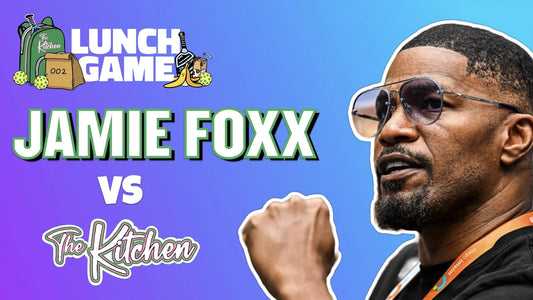
Lunch Game: Jamie Foxx
In this special episode of Lunch Game, Jared and Jason take on Jamie Foxx.
Lunch Game: Jamie Foxx
In this special episode of Lunch Game, Jared and Jason take on Jamie Foxx.
This one is special for us as Jamie, who is a huge pickleball player and even has his own pickleball paddle brand, www.TheBestPaddle.com.
Jamie was the most gracious host, inviting us and our pretty significant crew, to his house where he has three pickleball courts. He also made us lunch and was extremely generous with his time.
We shot this on MLK Day, January 2023. Before we were able to release this, Jamie fell ill and it was unsure what his prognosis was. Jamie is now on the mend and has battled back to find himself back on pickleball courts and movie sets once again.
We couldn’t be more relieved… Jamie Foxx is the man 😉
In this game, Foxx partners with professional pickleball players Ryan “Sherbear” Sherry and Matt “McNasty” Manasse.
In this special episode of Lunch Game, Jared and Jason take on Jamie Foxx.
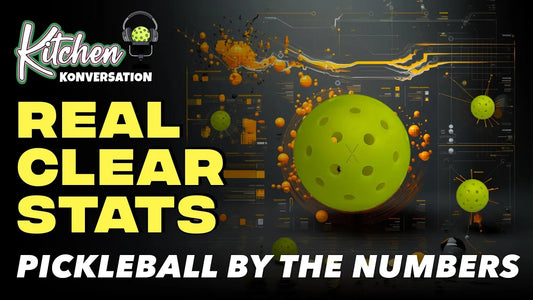
Real Clear Stats – “Pickleball by the Numbers”
Real Clear Stats saw an opportunity in the sport of pickleball and they are changing the way we view the game. Through data capture, the...
Real Clear Stats – “Pickleball by the Numbers”
Real Clear Stats saw an opportunity in the sport of pickleball and they are changing the way we view the game. Through data capture, the structuring of the data, analyzing the data, and then extrapolating what all that data really means to pickleball players and MLP teams, they are proving to offer incredible insights into how the game is played. Ben breaks down what the data is showing us and where he thinks this game is headed.
You can follow Real Clear Stats on socials: @StatsRealClear (X) @RealClearStats (IG)
Real Clear Stats saw an opportunity in the sport of pickleball and they are changing the way we view the game. Through data capture, the...




